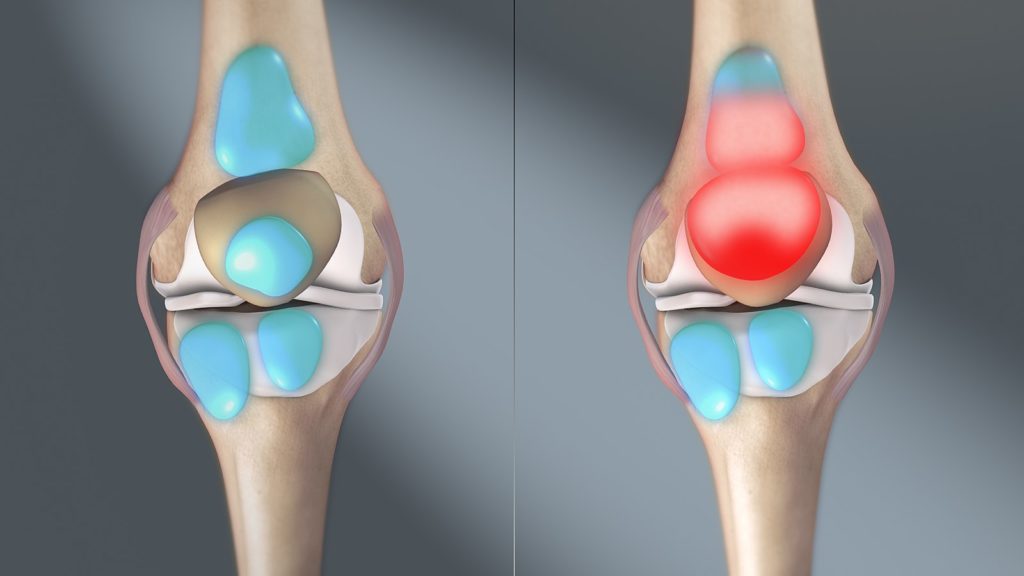
http://www.scientificanimations.com, CC BY-SA 4.0 https://creativecommons.org/licenses/by-sa/4.0, via Wikimedia Commons
This section covers bursitis of the prepatellar bursa that occurs after an injury or trauma (traumatic prepatellar bursitis). In order to better understand traumatic prepatellar bursitis it is important to understand the anatomy and function of the knee and the patella. Please review the section on knee anatomy before reviewing this section.
The kneecap (patella) is a small bone in the front of the knee. It glides up and down a groove in the thighbone (femur) as the knee bends and straightens. The patellar tendon is a thick, ropelike structure that connects the bottom of the patella to the top of the large shinbone (tibia). The powerful muscles on the front of the thigh, the quadriceps muscles, straighten the knee by pulling at the patellar tendon via the patella.
What is the prepatellar bursa?
A bursa (pl. bursae) is a small fluid-filled sac that decreases the friction between two tissues. Bursae also protect bony structures. There are many different bursae around the knee but the one that is most commonly injured is the bursa in front of the patella, the prepatellar bursa.
The prepatellar bursa is usually very thin. When irritated or injured the prepatellar bursa can fill with fluid or blood and become large and painful. If repeatedly irritated or injured, the walls of the bursa may thicken and have irregular areas of scar tissue that are often mistaken as “bone chips”. Calcium may also collect inside the bursa.
What is the cause of prepatellar bursitis?
After a direct blow to the front of the knee the prepatellar bursa can become swollen. This can occur immediately or over a couple of hours. The degree of swelling can vary. The front of the knee is usually very painful to touch and it can also be painful to move. In addition, the area around the prepatellar bursa may be warm. If there is significant swelling or pain X-rays are usually performed to rule out a broken or chipped patella.
What is the treatment for prepatellar bursitis?
Depending on the severity of the injury, the treatment of traumatic prepatellar bursitis may include resting the knee, applying ice packs to the area, light compression of the knee with a tensor bandage and elevation of the injured leg. Medications to help reduce the swelling and pain may also be required. If there is a large amount of swelling and the knee is uncomfortable the bursa may need to be drained by a doctor.
After the swelling comes down and the bursa is less painful, padding the area may be required for some types of work, sports and recreational activities like gardening. In rare cases surgery is required to remove a prepatellar bursa that remains swollen or is repeatedly irritated or injured.
What are the potential complications of prepatellar bursitis?
Complications of traumatic prepatellar bursitis include repeated irritation or injury, persistent pain and/or swelling or infection in the bursa. These complications require different types of treatment. Doctors and physiotherapists trained in treating these types of injuries can outline an individualized treatment for traumatic prepatellar bursitis.
Please visit the links section for additional information on prepatellar bursitis. Links have been provided to other websites as well as online medical journals. Other knee injury topics can also be accessed.
